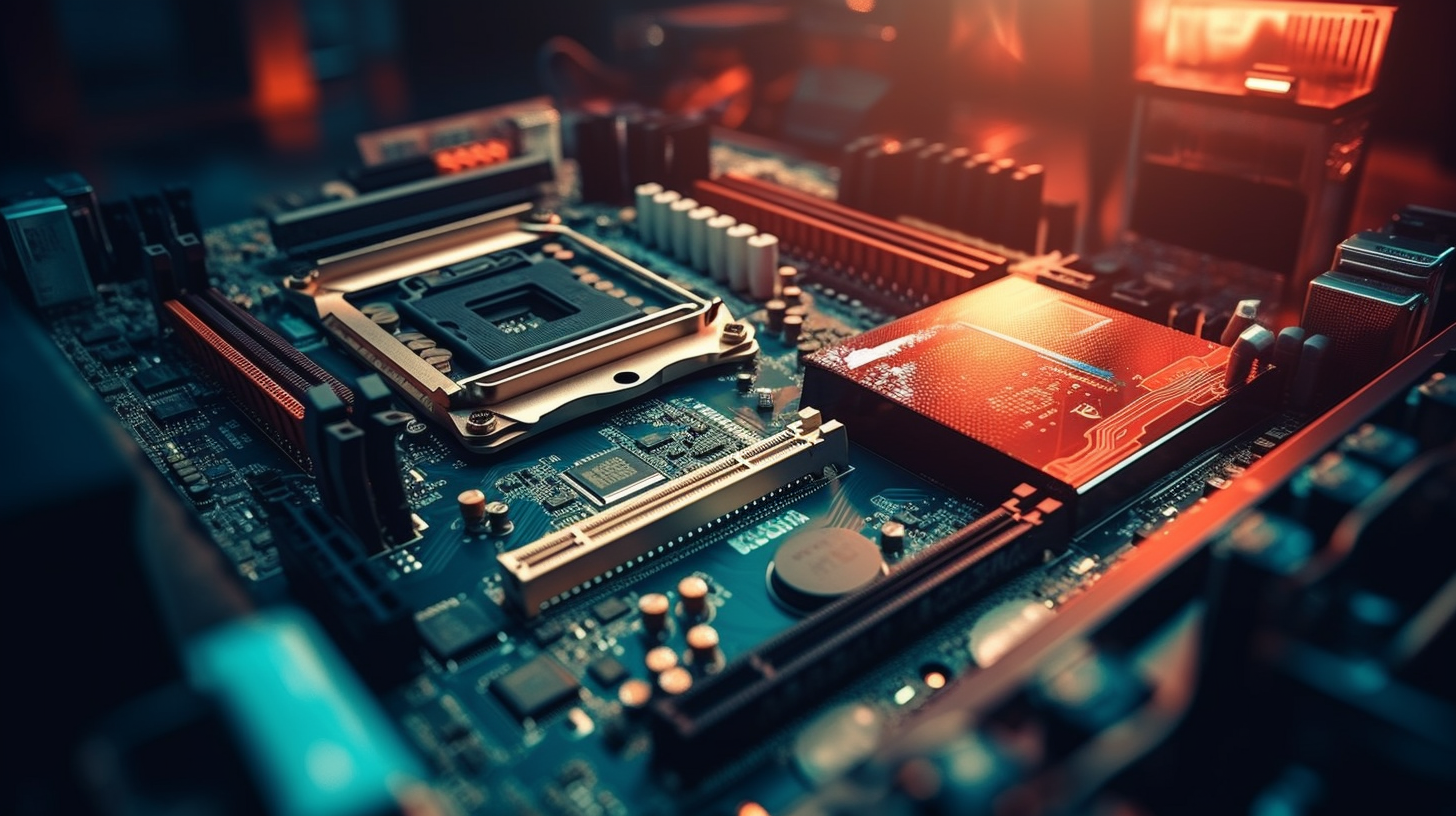Troubleshooting Motherboards, RAM, CPU, and Power Issues: A Comprehensive Guide

Dealing with computer headaches can feel like you're trying to find your way through a twisty maze! If you're gearing up for the CompTIA A+ Core 1 (220-1101) certification, getting cozy with the key hardware components is a must. We’re talking about the motherboard, RAM, CPUs, and power supplies—these are like the lifeblood of your machine; when one of these guys goes kaput, the whole system can take a nosedive! In this article, we’ll take a deep dive into common hardware hiccups and arm you with practical tricks to tackle them like a champ.
The Motherboard: The Brain of Your Computer
Think of the motherboard as the brain that keeps all the parts of your computer talking to each other. If it starts acting up, you might run into boot issues, random shutdowns, or those maddening beeping noises when you power up. Getting familiar with its layout—like where the CPU, RAM slots, and crucial expansion slots are—can really come in handy when things go south.
When folks chat about motherboards, they often get lost in the nitty-gritty design bits and how they impact performance. The setup of a motherboard plays a big role in how signals travel and how heat is managed. Engineers spend time figuring out electromagnetic interference and signal stability on those printed circuit boards, which helps pinpoint potential pitfalls and boosts our machines' reliability. So, that motherboard is not just a flat piece of tech; it’s a smart design that keeps evolving with our tech needs.
RAM Troubles: Spotting Memory Mishaps
Random Access Memory (RAM) is key in keeping your computer speedy and responsive. If your system is dragging its feet or throwing fits, your RAM could be the troublemaker. Funky or failing RAM can lead to crashes, pesky error messages, or even a complete failure to boot up. The good news? Once you get the hang of it, checking and swapping out RAM can be a piece of cake!
Research shows that about 10% of computer issues point back to bad RAM. Plus, around 30% of sluggish systems were found to be using outdated or incompatible RAM. This just goes to show how important it is to keep an eye on your memory during hardware check-ups. With tech changing faster than ever, keeping your memory systems strong is more critical than ever—so staying on top of maintenance and timely upgrades is a must!
The CPU: The Mastermind Behind It All
Your CPU is like the mastermind steering everything your computer does. If there are hiccups with the CPU, your system might slow down, heat up, or crash out of the blue. This tiny powerhouse is in charge of executing commands and processing data; if it’s not running like a well-oiled machine, the whole system starts to wobble.
To get to the bottom of CPU issues, start by checking the BIOS/UEFI settings to make sure your CPU is recognized and running at the right speed. While overclocking might seem like a tempting way to boost performance, tread carefully—without proper monitoring, it can lead to overheating. Keep a close eye on the cooling system; you might need to reseat the CPU cooler or slather on some new thermal paste.
The Power Supply: The Heartbeat of Your Computer
A computer without power? Just a bunch of lifeless components. The power supply unit (PSU) is the magic box that keeps everything humming along, sending the juice to all your components. If your PSU is acting up, get ready for surprise shutdowns, weird noises, or a complete power failure.
Believe it or not, power issues are responsible for about 20% of all computer woes, with faulty connections or not enough power causing around 60% of these headaches. For effective troubleshooting, make sure all power connections are secure and double-check that your PSU is supplying enough wattage to keep your system happy.
Making Troubleshooting Easier
Each component has its own troubleshooting playbook, but there are some solid strategies that can make your life easier. Start with the basics: reseat components, tighten those connections, and clear out the dust—these straightforward fixes often squash minor headaches. If problems hang around, it’s time to level up your diagnosis—grab a multimeter for power tests or run memory diagnostic software to see how your RAM is holding up.
Taking a methodical approach saves time and makes sure you won’t skip any critical troubleshooting steps. Beginning with simple fixes and working your way up to the more complex stuff allows you to get to the root of the problem, saving you from unnecessary guesswork.
Common Problems and Their Fixes
Here’s a quick rundown of some common issues you might run into and how to tackle them quickly:
- Issue: Computer refuses to boot.
Fix: Start by checking the power supply. Ensure all cables are snug. A power supply tester can help you confirm if it’s working.
- Issue: Random reboots or crashes galore.
Fix: This might mean your system is overheating. Check if the CPU cooler is securely attached, clear out any dust, and make sure all fans are spinning.
- Issue: Screen stays black.
Fix: Look into the RAM. Reseat or swap RAM modules, check that the graphics card is snug, and try a different monitor or cable.
Using these tips will help you tackle the most common hardware concerns and get your system back on track.
Final Thoughts: Your Path to Becoming a Troubleshooting Whiz
Understanding hardware issues is part gut instinct, part hands-on know-how. With the right skills and a sprinkle of patience, you can untangle the complex world of motherboards, RAM, CPUs, and power supplies. Getting the knack of diagnosing and resolving these issues will not only prep you for the CompTIA A+ exam but also give you the confidence to face real-world hardware challenges head-on!
Remember, there’s a solution just waiting for you to uncover! So, put on your troubleshooting hat, stay cool, and dive into the fascinating world of diagnostics!